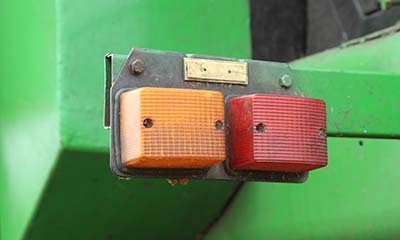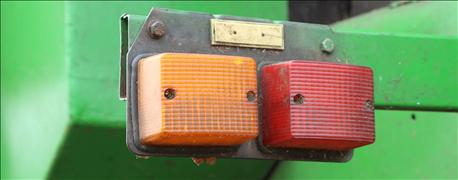June 29, 2016

The United States now has a federal, nationwide standard for agricultural equipment lighting and marking.
The U.S. Department of Transportation on June 22 published a final rule regarding the lighting and marking on agricultural equipment.

The U.S. Department of Transportation on June 22 published a final rule regarding the lighting and marking on agricultural equipment. (Photo: geargodz/Thinkstock)
Formation of the rule was mandated in the 2012 highway bill signed by President Obama, the Moving Ahead for Progress in the 21st Century Act (MAP–21). That legislation required the DOT's National Highway Traffic Safety Administration to establish a federal rule regarding lighting and marking for agricultural equipment. The Moving Ahead for Progress in the 21st Century Act (MAP-21) mandate made the rule not subject to the typical public comment period. The requirements are effective immediately; however, manufacturers have one year—until June 22, 2017—to be in compliance.
The rule incorporates the American Society of Agricultural and Biological Engineers Standard for originally manufactured agricultural equipment.
“The Society maintains a neutral and advisory role with regard to governmental regulatory actions," said Darrin Drolllnger, ASABE executive director. "Nevertheless, we appreciate that the U.S. DOT recognizes the long-standing efforts of the ASABE Lighting and Marking committee to improve the safety of agricultural equipment on public roads."
Prior to this rule, states were the primary sources of regulations regarding agricultural equipment lighting and marking. This created a varied landscape of regulations that made it difficult for manufacturers to meet the myriad requirements.
ASABE’s voluntary standards have begun to standardize the requirements.
At least once every five years, the rule will be reviewed and updated.
The requirements for tractors and self-propelled equipment include:
-Two head lamps, two red tail lamps and at least two flashing amber warning lights must be mounted at the same height and spaced laterally as wide as possible;
-At least two flashing amber warning lights visible from both front and rear must be used when the machine is at least 3.7 meters wide.
-Turn signals required.
-For machines designed to exceed 40 km/h, at least two red rear facing stop lamps that illuminate when operator activates brakes are required. If the machine is less than 1,200 mm wide, only one stop lamp required.
-Two red retro reflective devices must be visible from the rear.
-One slow moving vehicle identification emblem must be installed on the machine.
Rules for non self-propelled equipment:
-Equipment that obscures the SMV emblem of the propelling machine must have an additional visible SMV emblem.
-Equipment that extends more than 1.2 m to the left or right of the propelling machine shall have at least one strip of yellow retro reflective material visible from the front and at least one strip of red retro reflective material visible from the rear.
-Equipment that obscures the front or rear flashing lamps of the propelling machine shall have at least two amber flashing lamps mounted to the machine, visible from the front or rear of the machine.
Costs include head and tail lights, which can be sourced for less than $50 per foot, and reflective conspicuity tape, which sells for as low as 75 cents per foot.
Sources: Federal Register, American Society of Agricultural and Biological Engineers
You May Also Like




